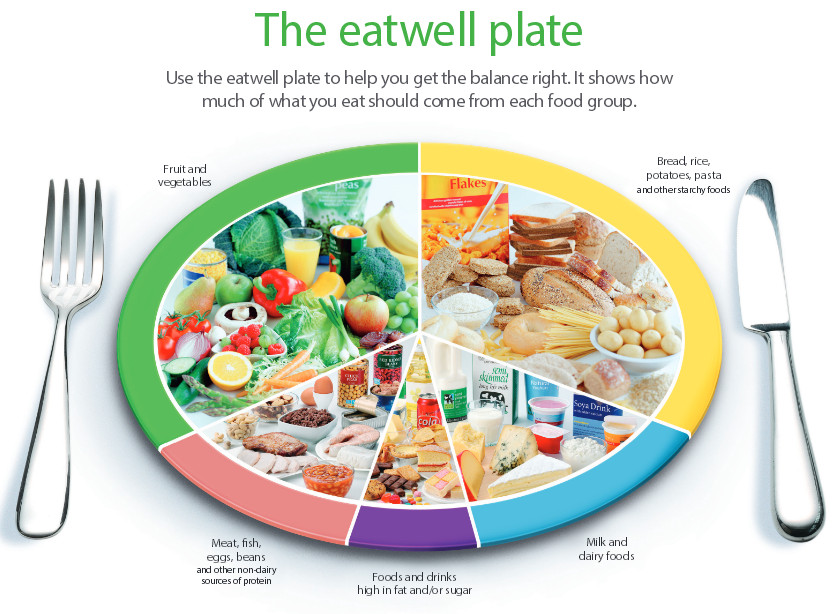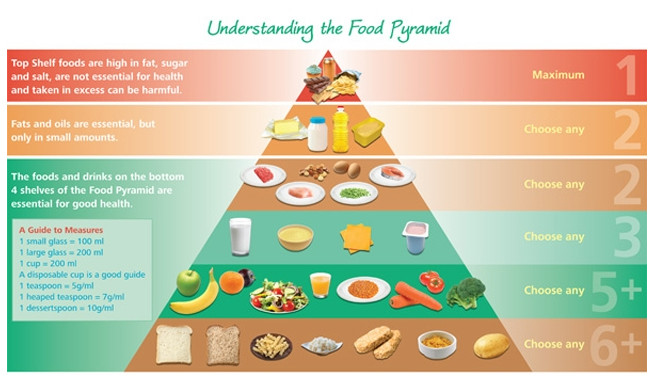Balanced Diet
Numerous TV programs, diet books and web sites suggest a great number of complicated diets, but in fact healthy eating is rather simple. Following a balanced diet means getting all the necessary nutrients in the right proportions and amounts. Thus, every person who wants to lose or maintain weight should eat various healthy foods and count the calories.
How Does It Work?
A balanced diet includes products from all food groups and restricts consumption of certain things, like cholesterol1, saturated fats2, refined sugar, trans-fatty acids3, alcohol, salt, etc. Healthy eating patterns are based on lean animal proteins, vegetables, fruits, low-fat dairy, fish, nuts, beans, seeds, and whole grains.
How Many Calories Do You Need?
It is also very important to control the number of calories. A healthy intake is based on gender, age, physical activity, and some other factors. The Unites States Department of Agriculture recommends the following levels of daily calorie intake:
- Active men ages fourteen – thirty: 2,800 – 3,000
- Active women and men over thirty: 2,200 – 3,000
- Sedentary men ages fourteen – thirty: 2,000 – 2,600
- Active woman ages fourteen – thirty: 2,400
- Sedentary women and men over thirty: 1,800 – 2,200
- Sedentary woman ages fourteen – thirty: 1,800 – 2,000
- Children: 1,000 – 1,400
What Foods Should Be Eaten?
The so-called eatwell plate demonstrates five main food groups and helps to get the correct balance between them.

So, in order to have a balanced diet, you should eat:
- Many vegetables and fruits
- Many starchy foods
- Some lean meat, eggs, fish, beans, nuts, and seeds
- Some low-fat milk and dairy products
- A small amount of high-fat or high-sugar drinks and foods
Of course, it is recommended to give preference to foods from the first four groups.

When you plan your own balanced diet, you can also use the food pyramid. It helps to choose the right amount of proteins, fats, carbohydrates, minerals, and vitamins. Every shelf of this pyramid includes products, containing the same nutrient. The drinks and foods from the bottom four groups are essential for a healthy eating. The products on the top two shelves should be eaten too but in limited amounts.
There is no need in supplements if you follow a balanced diet, because you get all nutrients from the food you eat. But if you are a woman who is going to become pregnant or bears a child, you should take folic acid according to your doctor’s prescription.
What Foods Should Be Avoided?
You should try to limit the consumption of so-called “empty calories” coming from solid fats and sugars. Thus, eat less sausages, bacon, doughnuts, cheese, pizza, cakes, and ice cream. You should also avoid fruit drinks, energy drinks, sodas, and sport drinks.
Of course, if you want to follow a healthy diet, you should not drink alcohol and smoke cigarettes.
What Are the Benefits?
As a rule, people who follow a balanced diet do not have problems with excessive weight. Healthy eating also helps to prevent diabetes, heart stroke and disease, various types of cancer, and other long-term diseases.
Are There Any Health Risks?
In general, a balanced diet is harmless, because it includes only healthy foods and they are eaten in the right amounts. But if you have any health issues, you should consult your doctor and make up your own eating plan with his/her help.
Bottom Line
A balanced eating plan is probably the best diet for most people. It recommends eating only healthy products from all main foods groups and provides the body with all the necessary nutrients in right amounts. If you choose it as a lifetime approach to planning your menu, you will always have an ideal weight and you will reduce risk of developing many chronic diseases.
Balanced Diet Plan
Following a balanced diet means eating healthy products from all main food groups and consuming them in the right amounts. Below you can see the eatwell plate showing what types of food and how much of them you should eat.
Now let’s discuss how you can include foods from these groups in your menu.
- Legumes and vegetables – You can cook vegetable soups, salads, curries, sandwiches, and stir-fries. Cooked and raw vegetables make healthy side dishes. Raw celery sticks and carrot can be eaten as snacks.
- Fish, eggs, lean meat, tofu, legumes, and poultry – All these products are rich sources of protein. They can be used in a great variety of healthy main dishes. Legumes are often added to stews and soups. A handful of nuts will be a tasty snack.
- Starchy foods – Eat pasta, rice, noodles, bread, and cereals with vegetables, eggs, and lean meats. Give preference to whole grains in cereals and breads.
- Fruits – You can include them in many meals and carry as snacks. Bananas, berries or pears can be added to breakfast cereals or yogurts. Apples are great for your morning tea. Dieticians recommend eating whole fresh fruits. Juices have much less fiber and dried fruits often contain too much sugar.
- Dairy products – First of all, eat only low-fat or non-fat milk, cheese, and yogurt. Milk and yogurt are good with breakfast cereal. Cheddar or parmesan is widely used to top pasta, salads or vegetables. You can also try sandwiches with cottage cheese.
Serving sizes
Below you will find recommendations about serving sizes of various foods.
Vegetables, beans, and legumes – A standard serving equals 75 grams or:
- 1 cup raw salad vegetables
- ½ cup canned beans or cooked beans, lentils, or peas
- ½ cup corn
- ½ cup cooked vegetables
- 1 tomato
- ½ potato
Protein rich products – A standard serving equals:
- 60 grams lean lamb, beef, or pork
- 2 chops
- ½ cup mince
- 80 grams cooked turkey or chicken
- 1 cup cooked lentils or beans
- 170 grams tofu
- 100 grams cooked fish
- 1 can fish
- 30 grams seeds or nuts
Fruits – A standard serving equals 150 grams or:
- 1 cup fruit (without sugar)
- 1 banana, apple, pear, or apple
- 2 kiwi fruits, plums, or apricots
Occasionally you may eat dried fruits and drink juice:
- 30 grams dried fruits (four apricot halves)
- 125 milliliters juice (1/2 cup)
Grain foods – A serving equals:
- ½ cup cooked pasta, bulgur, rice, barley, polenta, noodles, or quinoa
- A slice of bread
- 2/3 cup
- ¼ cup porridge
- 3 crispbreads
- ¼ cup flour
- ¼ cup muesli
Dairy products – A serving equals:
- 2 slices cheddar
- 1 cup milk
- ½ cup ricotta
- 1 cup cereal drink
Remember that you should eat low-fat or non-fat dairy foods.
Healthy Tips
Here are some additional pieces of advice explaining the ABC of healthy balanced diet:
- Starchy foods are the main source of energy in a balanced diet. When possible, eat whole grain varieties because they provide you with more fiber.
- Do not forget about fish. You should eat at least a couple of servings every week, and one of them should be oily sea fish.
- Eat five - six portions of vegetables and fruits every day.
- Drink six – eight glasses of pure water a day. Do not replace it with tea, coffee, juices or other drinks.
- Consume less sugar, salt and saturated fat.
- Never skip breakfast.
- Be active. Do physical exercises. Walk much.
- Find out what weight is healthy for you and reach it.
Remember that you do not need any fad diets to lose excessive weight. A balanced eating plan is much healthier and efficient in the long run.
- Cholesterol is a substance found in the fat, blood, and tissues of animals. If there is too much cholesterol in the blood, it can cause various diseases.
- Saturated fats are fats found in eggs, meat, cheese, butter, and other foods. They cause numerous illnesses, including heart disease.
- Trans-fatty acids are unsaturated acids occurring in cooking oil, margarines and other foods because of the hydrogenation.